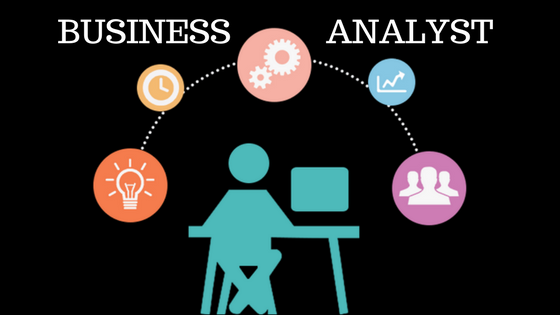Introduction In today's rapidly evolving business environment, the ability to analyze and interpret data effectively is a crucial skill for success
Introduction
In today’s rapidly evolving business environment, the ability to analyze and interpret data effectively is a crucial skill for success. The role of a business analyst has never been more important, as organizations seek to harness data-driven insights to drive strategic decisions. This guide explores the art of business analysis, offering practical advice on how to master this essential skill and unlock valuable insights for your business.
What is Business Analysis?
Business analysis involves evaluating and interpreting data to understand business performance, identify opportunities for improvement, and guide decision-making. It combines skills in data collection, statistical analysis, and strategic thinking to provide actionable recommendations. Business analysts work across various industries, including finance, healthcare, retail, and technology, making it a versatile and sought-after profession.
The Importance of Business Analysis
Effective business analysis offers several key benefits:
Informed Decision-Making: By analyzing data, business analysts provide insights that help organizations make informed decisions, reducing risks and improving outcomes.
Strategic Planning: Business analysis helps in setting realistic goals and developing strategies to achieve them, ensuring alignment with the company’s vision and mission.
Process Improvement: Analyzing business processes can uncover inefficiencies and areas for improvement,
Data Analysis: Proficiency in statistical techniques and tools, such as Excel, SQL, and data visualization software, is essential for analyzing and interpreting data.
Critical Thinking: The ability to assess complex situations, identify patterns, and draw meaningful conclusions is crucial for providing valuable insights.
Communication: Effective communication skills are necessary for presenting findings, making
Define the Problem: Clearly identify the problem or opportunity that needs addressing. This involves understanding the business context and the specific issues at hand.
Collect Data: Gather relevant data from various sources, such as internal databases, market research, and customer feedback. Ensure the data is accurate, complete, and reliable.
Analyze Data: Use statistical and analytical techniques to examine the data. Look for trends, patterns, and correlations that can provide insights into the problem or opportunity.
Interpret Results: Translate the data findings into meaningful insights. Determine the implications for the business and how they align with strategic goals.
Formulate actionable recommendations based on the analysis. These should be practical, feasible, and aligned with the organization’s objectives.
Present Findings: Communicate your findings and recommendations clearly and effectively. Use visual aids, such as charts and graphs, to support your points and make the information accessible.
Implement Changes: Work with stakeholders to implement the recommended changes. Monitor the results to ensure that the desired outcomes are achieved and make adjustments as needed.
Review and Refine: Continuously evaluate the effectiveness of the implemented changes. Gather feedback, assess performance, and refine your approach based on lessons learned.
Tools and Techniques for Business Analysis
Several tools and techniques can enhance your business analysis capabilities:
Data Visualization Tools: Tools like Tableau, Power BI, and Google Data Studio help create visual representations of data, making it easier to identify trends and insights.
Statistical Software: Software such as R and SAS provides advanced statistical analysis capabilities, allowing for more in-depth data examination.
Business Intelligence (BI) Platforms: BI platforms like IBM Cognos and MicroStrategy offer comprehensive solutions for data analysis, reporting, and dashboard creation.
Project Management Tools: Tools like Microsoft Project and Asana assist in managing projects, tracking progress, and ensuring that analysis efforts align with project goals.
Customer Relationship Management (CRM) Systems: CRM systems like Salesforce and HubSpot provide valuable data on customer interactions, helping to analyze customer behavior and preferences.
Best Practices for Effective Business Analysis
To maximize the impact of your business analysis efforts, consider the following best practices:
Understand Stakeholder Needs: Engage with stakeholders to understand their requirements and expectations. This ensures that your analysis addresses their concerns and provides relevant insights.
Focus on Business Objectives: Align your analysis with the organization’s strategic goals. Ensure that your recommendations contribute to achieving these objectives.
Maintain Data Quality: Ensure that the data you use is accurate, complete, and up-to-date. Poor data quality can lead to misleading insights and ineffective recommendations.
Communicate Clearly: Present your findings in a clear, concise manner. Avoid using jargon and technical terms that may confuse non-technical stakeholders.
Stay Updated: Keep abreast of industry trends, emerging technologies, and best practices in business analysis. Continuous learning and adaptation are key to staying relevant in the field.
The Future of Business Analysis
As technology continues to advance, the role of business analysts is evolving. Emerging trends such as artificial intelligence (AI), machine learning, and big data are reshaping the landscape of business analysis. Business analysts will increasingly need to leverage these technologies to extract deeper insights and drive innovation.
Additionally, the growing emphasis on data-driven decision-making means that business analysts will play a pivotal role in shaping organizational strategies and ensuring that businesses remain competitive in a dynamic environment.
Conclusion
Mastering the art of business analysis is essential for unlocking valuable insights and driving strategic success. By developing the necessary skills, following a structured process, and leveraging the right tools, you can enhance your ability to analyze data effectively and make informed decisions. For those looking to deepen their expertise, a Business Analyst course in Agra, Mumbai, Dehradun, Delhi, Noida and all cities in India can provide valuable knowledge and hands-on experience. As you continue to grow in your role as a business analyst, embrace the opportunities to innovate and adapt to the ever-changing business landscape. With dedication and expertise, you can make a significant impact on your organization and contribute to its long-term success.

